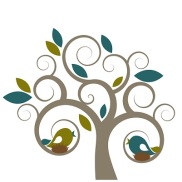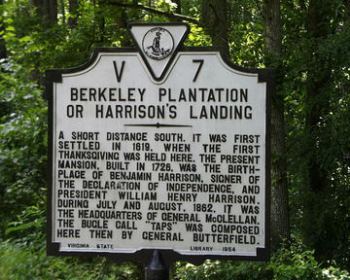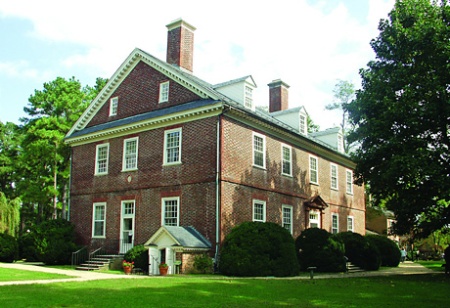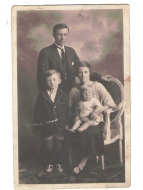For many reasons, I’ve always held Patrick Henry in high regard. Perhaps it is because of his captivating speech or it is the energy his viewpoints incited in others for the sake of forming a new country. While one-third of the people living in this new land were patriots, they were met by one-third remaining Loyal to the Crown, and one-third just wanting a new start without being politically involved. The early days of our country presented new or enlarged critical challenges each day. Patrick Henry, like many others during that time, was larger than life. After studying him, I’ve developed an even greater admiration.
This article focuses on The Henry Family structure. A link to the transcribed Will and Testament of Patrick Henry is at the end of this article
Imagine: you are a staunch supporter of rebelling against a world-class political oppressor and your wife dies, leaving you with six children to raise. Yes, times were very different in most households then. Mr. Henry certainly wasn’t alone. He did have slaves available for taking responsibility of his children, home, and farm, so he could still launch into his political endeavors. Even so, this domestic passage must have overwhelmed him during his time of grief.
Recently, while researching wills and testaments related to probate and genealogy, I paused to read his parting message in his last will and testament. What impressed me was how sharply he delineated between his sons and daughters. The law and the culture of the times favored sons; but, not all of them were treated equitably. Daughters were left to marry a man who could keep her or rely on her brother’s generosity.
In his will, Henry directed that his wife choose which two of his six sons would inherit his personal and business effects, and share the family land where they lived. If she selected the two oldest, perhap they may not be the two with agricultural and managerial skills. Regardless of which sons she may select, what would the balance of the children do? His wife would need to weight the family’s future success while making her determination. Six of Patrick Henry’s sons happen to live to adulthood.
Although Mrs. Henry was her husband’s designee for making this critical decision; she was Patrick’s second wife and, in an ironic twist, deciding the fate of his sons by his first wife. That would certainly make for an interesting family reunion the following year. You’d think he would have spared his wife this unsavory duty by deciding himself; but, he must have had his reasons. Additionally, he also stipulated that if this wife remarried, his property would revert entirely to his children.
Once the second Mrs. Henry was widowed, is it any wonder she married the executor of his will? A bit of interesting information is her second husband was also Patrick’s cousin. I guess this is one way to keep them down on the farm.
HIS TWO WIVES:
Patrick Henry was born 29 May 1736 at Studley and died at “Red Hill” on 6 June 1799 at age 63. He is buried at “Red Hill” in Charlotte County, VA.
He married his first wife, Sarah Shelton in 1754. She was born at “Rural Plains” and died at “Scotchtown” in Hanover County, VA in 1775. She is buried in Hanover County, VA.
Patrick married Dorothea Dandridge on 25 Oct 1777. She was born 25 Sept 1755. Although a few historians place her birth year at 1757 at “Chelsea” it is recorded that she died 14 Feb 1831 at age 73 at “Seven Islands”, Halifax County, VA. Because of inclement weather, at the time of her death, she is interred at “Red Hill” beside Patrick Henry. Dorothea did marry Judge Edmund Winston, Patrick’s first cousin and executor. She was also Martha Dandridge Custis Washington’s first cousin.
We live in a day and time when life expectancy is the longest it has ever been in history. During these early days of our country, it was not all that lengthy. A healthy life was a precious commodity, as it is today, but then it was a much more delicate proposition.
Patrick Henry and his wives were responsible for giving life to 17 children total. Several did not live to adulthood. A few who became adults, died young leaving their wives and small children to fend in a cruel world; others lived to rather ripe old ages. All this seems like the usual mix of events; but, I can’t help but feel empathy for this family. Not only did six children lose their mother when his first wife, Sarah Shelton Henry, died; at that time, Henry was overwhelmed preparing for the American Revolution. It is always sad when a parent outlives a child. Patrick buried a wife and nine. Losing a spouse can be shocking; but, it is more expected than burying nine children. That nearly goes against natural law.
PATRICK HENRY’S FIRST FAMILY WITH SARAH SHELTON:
- Martha “Patsy” – d. 1818, age 63
- John – d. 1791, age 34, predeceased Patrick by 8 years
- William – d. 1798, age 35, predeceased Patrick by 1 year
- Anne – d. 1799, age 31, predeceased Patrick by 15 days
- Elizabeth – d. 1842, age 73
- Edward – d. 1794, age 23, predeceased Patrick by 5 years
PATRICK HENRY’S SECOND FAMILY WITH DOROTHEA DANDRIDGE:
- Dorothea – d. 1854, age 75
- Sara – d. 1856, age 76
- Martha Cathrina – d. 1801, age 19
- Patrick – d. 1804, age 21
- Fayette – d. 1813, age 27
- Alexander Spotswood – d. 1851, age 65
- Nathaniel West – d. 1851, age 61
- Richard – d. 1793, age 17, predeceased Patrick by 6 years
- Edward Winston – d. 1872, age 78
- John – d. 1868, age 71
- Jane Robertson – d. 1798, predeceased Patrick by 4 days
For most people, it is difficult relating to having this many children. During those times having a large family was common. Illness claimed countless children as life was more fragile and less protected by medicine. Even acknowledging that, it is noteworthy that Patrick was still expanding his family during his 50s and 60s. Researching The Henry Family has illuminated more about this man than I ever anticipated before starting.
To read Patrick Henry’s last will and testament, please refer to this link:
Patrick Henry’s Last Will and Testament
Filed under: Uncategorized | 12 Comments »










